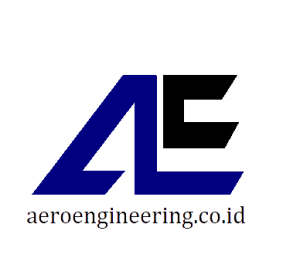Aircraft control surfaces are the part of an airplane which used to control the movement and attitude of an aircraft. Control surfaces work by utilising aerodynamic forces direction to get the desired attitude. Before we discuss about control surface, we will first discuss about aircraft’s orientation:
The three main attitude orientations of an aircraft in flight are pitch, roll and yaw. Pitch is an aircraft rotating movement againts lateral axis, which is nose-up or nose-down, then roll is rotating movement about longitudinal axis, which is wing moving up and down movement, and, yaw is the rotating movement about vertical axis, which is heading the nose to the left or right. In fact, those three movements are combined to get actual motion of the aircraft.
After we understand about three main aircraft movement orientations, it is time to discuss about control surfaces. Control surfaces are divided to primary and secondary category. Generally, primary control surfaces are aileron, elevator, rudder and its combinations, then the secondary control surfaces are flap, slat, spoiler, speed brakes and tab. Picture below are the control surfaces In general:
Primary control surfaces
- Aileron
Aileron is control surface located in the trailing edge (rear part of the wing) in the left and right end side of the wing. The left and right aileron deflected reversely, hence created reverse aerodynamic force between left and right part of the wings then creates roll movement.
- Elevator
Elevator positioned in the horizontal stabilizer’s trailing edge. If the elevator deflected downward, the tail part of the aircraft will go up, creates a nose-down attitude. Inversely, if the elevator deflected upward, the tail part of the aircraft will go down, creates a nose-up attitude. Elevator is a pitch attitude controller.
- Rudder
Rudder located in the vertical stabiliser trailing edge, if rudder deflected right, the tail will moves to the left, hence make the aircraft nose tend to moves right and the aircraft turns to right and vice versa. Rudder is yaw controller but has side-effect roll motion. Sometimes, rudder is connected with landing gear system so can be used to control aircraft turning motion on the ground.
- Combination of control surfaces
For unconventional aircraft such as V-tail, flying wing, canard etc., the combined control surfaces are often used. For example, rudder and elevator are combined to get the same function as rudder and elevator but in one part, called ruddervator sometimes used in V-tail. Then, aileron which combined with elevator called elevon commonly used in flying-wing aircraft. The combination between flap and aileron is called flaperon. And the completely movable horizontal stabilizer is called elevon or just stabilizer.
Secondary control surfaces
- Flap
Flap is used to improve wing’s lift force followed by drag increasing, hence the aircraft could fly in the low speed at the same time can be used as brake in the air. Flap located in the wing’s trailing edge near the fuselage. Flap commonly used when landing.
- Slat
Slat is a control surface located in the leading edge (front end of the wing). Slat is used to improve lift by increasing wing’s chamber. Difference with flap, slat doesn’t causes stall at high angle of attack and has better controllability at that condition.
- Spoiler and speed brakes
Spoiler is used for spoil the flow hence drop the lift only in one side of the wing and help the function of aileron for roll attitude. Spoiler commonly used for heavy and high performance aircraft. If the right and left spoilers activated simultaneously, these will become a speed brake.
- Tabs
When an aircraft flight in high speed, control surfaces sometimes become hard to control because of high aerodynamic loads. Sometimes these control surface are too sensitive. Tabs are used to solved these problems. These are the example of tabs:
- Trim tab: can be used to stabilize the aircraft without continuous control input from the pilot. This stabilize condition is called trim condition.
- Balance tab: helps pilot reduce the control surface’s load
- Servo tab: acts like balance tab, but servo tab functioned to backups control surface function as well.
- Anti-servo/anti-balance tab: functioned inversely with balance/servo tab, reduce sensitivity of control surface hence helps pilot to control aircraft in some conditions.
- Spring tab: similar with balance tab, but only activated if high speed condition or heavy load condition.
We also provide engineering consulting and project support for computational fluid dynamics. For more information, click here!











